Weekend Excursions - Saturday afternoon
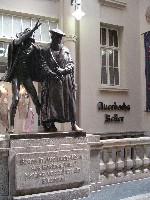
|
City of Leipzig: guided tour through the center of Leipzig
|

|
Start
Time |
2:00 p.m. market place in front of the old city hall
approx. 3 h |
Fee
|
5 Euro per person
|
In a guided tour of about three hours you will explore well worth seeing places in the center of Leipzig. The focus of the tour can be customized to the individual convenience of the guided group. Leipzig was the cradle of 1989's Peaceful Revolution, and visitors can follow the trail of the democracy movement which toppled East Germany's communist regime by visiting 'venues' such as St. Nicholas's Church, Augustusplatz, the ring road and the Stasi Museum in the "Runde Ecke", the Stasi's county headquarters. Leipzig is also named "city of music". Hardly any other city in the world has a comparable musical history. Names like Johann Sebastian Bach (cantor of St. Thomas's Boys Choir from 1723 to 1750) and Felix Mendelssohn are inseparably linked to Leipzig.
At Leipzig: city of music, this walk around the city and our short introduction site you can find more information and pictures of Leipzig. |
click to enlarge pictures
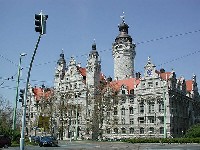 |
 |
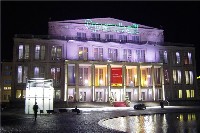 |
| picture credits: pictures published by wikipedia.org under GNU
License |
24th September 2005
Visiting the German Library (DDB), Russian Church or
(optional)
the Monument dedicated to the "Battle of the Nations"
1813
Start
Time |
2:00 p.m. at the conference facilities
approx. 3 h |
| Fee |
5 Euro per person |
|
Starting on foot from the conference
facilities we arrive at the German library (DDB) after a short walk
(5 min) where you will become acquainted with many interesting details of the DDB
in a 1-1.5 hours guided tour. The trip will be continued by a visit
of the Russian Church, which is only around 100 meters
away.
Optional you can visit the Monument dedicated to the
"Battle of the Nations" in 1813. During the 25 min walk to the
Monument we will pass the Russian Church, the German Library and the
old fairgrounds of Leipzig.
|
|
The German Library in brief
The
German Library ("Die Deutsche Bibliothek") is the national
library and national bibliographic information centre for the
Federal Republic of Germany. It is responsible for the collection,
processing and bibliographic indexing of all German and
German-language publications issued since 1913.
Die Deutsche
Bibliothek was established in 1990 on the basis of the Treaty of
Unification in a merger of the existing institutions the Deutsche
Bücherei Leipzig (founded in 1912) and the Deutsche
Bibliothek Frankfurt am Main (founded in 1947), of which the
Deutsches Musikarchiv Berlin had been an integral part since
1970.
The rich in tradition Leipzig centre houses the
Deutsches Buch- und Schriftmuseum, the Sammlung
Exil-Literatur 1933 - 1945 and the
Anne-Frank-Shoah-Bibliothek. |
click to enlarge picture
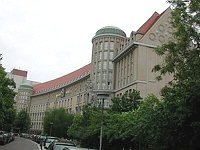 |
|
Russian Church
The Saint Alexi
Memorial Church in Leipzig was built up in commemoration of the
22 thousand Russian warriors who fell on German soil in 1813 in the
Battle of the Nations. In this battle the Russian army set out
against Napoleon in alliance together with Prussian, Austrian and
Swedish armies.
In notion of a living monument this wonderful
single-cupola tent-shaped church in the 16th century style was
built. The exterior of it resembles a monument and its interior
remains a church.
Inside the church (55 meter), there is a
seven-row iconostasis (18 meter) which is a donation of the Don
Cossacks complemented by eighty-seven icons presenting a wonderful
example of the old Russian icon-painting tradition.
The Memorial
church serves nowadays as a center of orthodox congregation of
Leipzig. |
click to enlarge picture
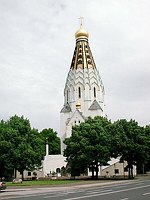 |
|
The Monument to the Battle of the
Nations
The Monument to the Battle of the Nations
("Völkerschlachtdenkmal") was built to mark the centenary of
the Battle of Leipzig in 1813 where Napoleon was decisively
defeated. About half a million of soldiers were fighting for the
political future of Europe. Fiercely fighting, one fifth of them
died in the battles during October 13 - 16, 1813.
After a
construction period of 15 years and treating 26.500 blocks of stone,
the 300.000t weighing monument was opened in 1913.
Climbing up
the 500 stairs is rewarded by a unique view on Leipzig from the top
observation platform at a height of 91 meters. |
click to enlarge picture
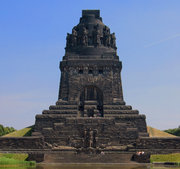 |
| picture credit: picture published by wikipedia.org under GNU
License |
24th September 2005
Bus trip to Wilhelm Ostwald Memorial Großbothen and Leipzig's "New Zealand"
Start
Time |
2:00 p.m. at the conference facilities
approx. 6 h |
| Fee |
20 Euro per person |
|
Starting on bus from the conference facilities in less than one hour we will arrive at the Wilhelm Ostwald Memorial in Großbothen (ca. 30km to the south-eastern of Leipzig). In a guided tour of about 1 hour you will be told about Wilhelm Ostwald, how he has lived and the many interesting and innovative things, he has done.
Subsequently, the bus takes you to (half an hour) and through (1 - 1,5 hours) the New Lake district in the south of Leipzig. The bus will stop at some remarkable places, and you will be told about the history and future plans of this region. The bus will be back at the conference facilities at around 8 p.m..
|
|
Wilhelm Ostwald Memorial in Großbothen
In Großbothen near Grimma one can explore the 7 hectare sized country seat "Energy" of the chemist, philosopher and color schema theorist Wilhelm Ostwald. He placed 5 buildings there which still exist today in its original assembly. The house "Energy" which hosted the former living quarters of Wilhelm Ostwald is now part of a public exhibition including the study room with his library and a variety of exhibits.
Wilhelm Ostwald was born in Riga in 1853. In 1887 he accepted the offered professorship of physical chemistry at the University of Leipzig - at this time the only professorship of this kind in the world.
The research for cause and progress of chemical transformation brought Ostwald into close contact with the term "Energy". Out of his thoughts he concluded that matter is just a special form of energy. 110 years ago this claim was widely rejected because only a few specialists understood how to use the term "Energy" properly.
In 1909 Ostwald was rewarded with the Nobel Prize (chemistry) "in recognition of his work on catalysis and for his investigations into the fundamental principles governing chemical equilibria and rates of reaction".
After leaving the University of Leipzig in 1906 he continued in pursuing new fields of interest, always driven by his motto: "Don't waste energy. Ennoble it.". For example, he promoted the introduction of a secondary world language, he propagated the technical usage of the sun as inexhaustible energy source, he actively supported the world peace movement and he created a character system for the world of colors.
Wilhelm Ostwald died in 1932 in a hospital in Leipzig.
|
click to enlarge pictures 
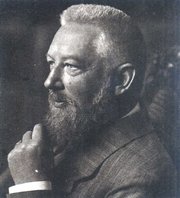
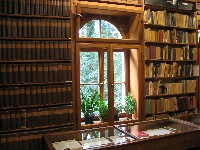
|
click to enlarge pictures

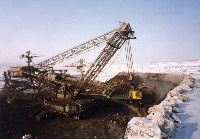
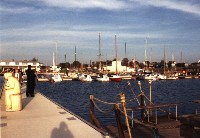
|
Leipzig's "New Zealand"
The "burning Earth" became more and more important: technological breakthroughs, and above all, wars induced a big scale, state executed-exploitation of lignite in the 20th century. The lignite mining climbed to 60 million tons per year, more than 10% of the world's lignite production. More than 30,000 miners and energy workers and nearly 13,000 employees of the chemical industry formed a gigantic mining-industrial complex. Air, water and soil were heavily polluted, 60 villages and even cities were devastated, roads and buildings, churches and cultural values, fields and woods disappeared for ever. Approximately 40 per cent of the landscape were taken up for the lignite mining, for lignite processing and electrical power plants. Environmental protection and the protection of human health had been secondary.
The Southern Surroundings of Leipzig experienced at the beginning of the 90s a break in the economic and social structure which is of no precedent concerning the radicalness and the speed in Central Europe's economic history. Closure of all chemistry factories based on lignite, all of 13 briquette factories, of 90% of the open cast mines, nearly 40,000 employees lost their jobs.
The transformation of this old industrial site is now under way. A water landscape - Neuseenland (New Lake district) - is developing from former open cast mines. The aim of the water-network is to connect the region south of Leipzig to the European network of water ways. The fascinating new water landscape is supplemented by lakes in the north of Leipzig as well as in the adjacent Saxony-Anhalt. |
|



 |home|
|home|